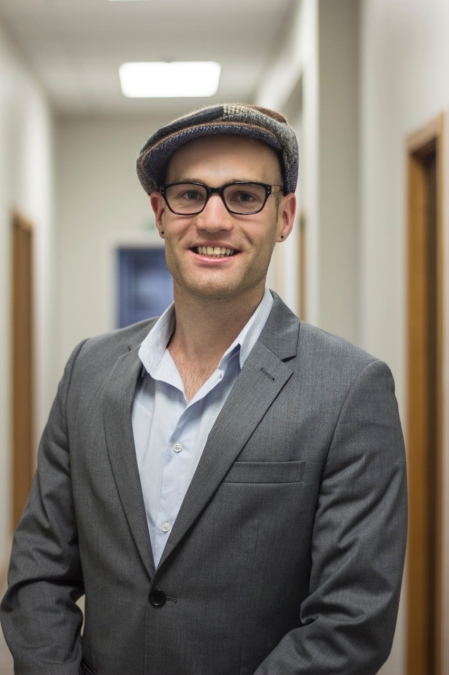Richard Wilson is a PhD candidate studying in the Hydraulic Engineering Laboratory
Years of study: 2014- Current | Thesis: Sediment-laden flows and their interaction with obstacles and substrates
 Richard completed his undergraduate degree at the University of Auckland in 2011 and worked as a Water Resources Engineer for Tonkin & Taylor until returning to the University. He spent the majority of his time in industry working as a stormwater designer on large-scale transport projects, such as the Waterview Connection Project.
Richard completed his undergraduate degree at the University of Auckland in 2011 and worked as a Water Resources Engineer for Tonkin & Taylor until returning to the University. He spent the majority of his time in industry working as a stormwater designer on large-scale transport projects, such as the Waterview Connection Project.
In March 2014, he re-joined the Department of Civil and Environmental Engineering as a doctoral candidate. Motivated and ready to contribute a lot more to his research area, he accepted a University of Auckland Doctoral Scholarship.
His research focuses on sediment-laden gravity flows (turbidity currents) and their interaction with obstacles and substrates, using scaled laboratory models coupled with ultrasonic and photometric measurement techniques.
“You will never look at running water the same again.” Richard says about working in the Hydraulics Lab in the Faculty of Engineering.
“Observing sediment-laden gravity currents in the lab is an amazing visual experience. This coupled with a passion for photography, creativity and a desire to develop innovative photometric methods for solving some of the problems faced in the engineering industry is what keeps me coming back each day.
“Sediment-laden gravity currents are known to cause damage to submarine structures and area a common cause for sedimentation of reservoirs. My research focuses on providing new insights into their characteristics through advanced photometric techniques which have been developed by us at the University of Auckland. This will help us to better understand their motion, and how we might be able to reduce their impact on structures,” he says.
About the Hydraulics Lab at Newmarket Campus
The Department of Civil and Environmental Engineering possess a 45-metre long flume capable of pumping sediment and water. The flume is the biggest in New Zealand and is large on a world scale. It enables engineers to simulate conditions in rivers, including flows and erosion in rivers beds and at hydraulic structures.
“The facilities in the new lab are a significant upgrade to the old lab, which provides an exciting path for future research. It is a privilege to be the first post-graduate student testing there. The Newmarket campus is in a great location, with train and bus stations close by and many nice cafes to grab my morning coffee from,” Richard says.
“My supervisor Dr Heide Friedrich is a pleasure to work with and provides a great deal of mentorship and assistance when needed. The lab technicians are exceptionally capable in a range of hydraulic and mechanical and electrical areas. They provide great solutions to experimental problems, and they’re friendly and always willing to help,” he says.
Why study for a PhD in Civil Engineering at the University of Auckland?
“It’s a great experience to manage such a large project on your own, not to mention the flexibility this brings with managing your own time. It’s also very rewarding to see your research published and presented, which helps remind you that the contributions of your research to problems faced in the industry is not only advancing your personal career, but advances our knowledge as a society,” he says.